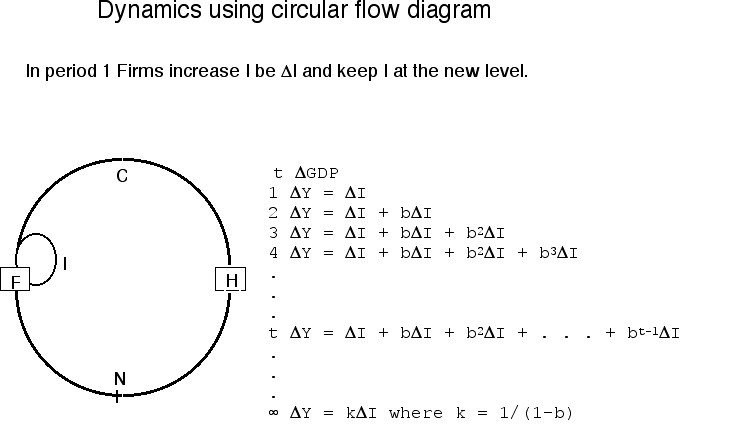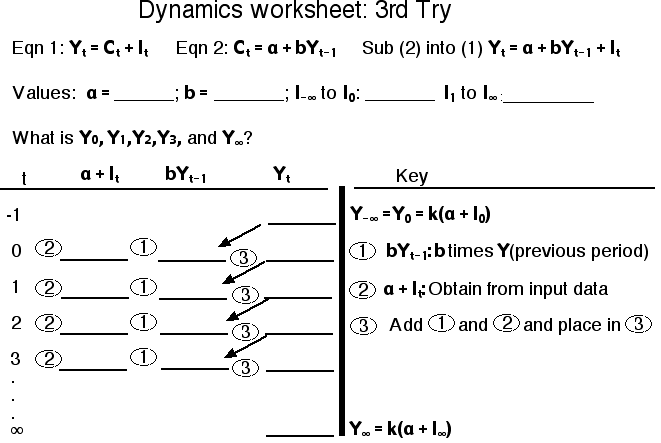
The gentlemenly C level of understanding
Consider a geometric series d + ad + a2d + º+ at-1d whose sum as t Æ € is [d/( (1 - a))] The multiplier is obtained by suming a geometric series
The B level of understanding

where do the terms come from: Household get their income at the end of the period and spend it in the next period. Each period the firms maintain the DI level of investments and that is the first term in each period. The other terms are b times the income received at the end of the previous period. Thus in period 4 the 2nd through the 4th terms come from b times (DI + b DI + b2DI) and so on.
Dynamic Problems
| |||||||
3. Given model above with a = 200 b = 0.75 and I0 = 150:
a) Suppose the economy is in equilibrium initially. What is the equilibrium Y?
Solution
Solve using the solution to the static model:
| |||||
k = 1/[1 - 0.75] = 4 Y = k[a + I] = 4[350] = 1400
b) Suppose I increases from 150 to 170 in period 1. Find Y0, Y1, Y2, and Y3.
Solution
Use a table. On the quiz and tests I will not give you the format for the table because there are several ways you could set up the table and I do not want arguments with the grader. This is a sample table with an extra column relating what you are doing to the geometric series.
c) What is the final equilibrium Y?
Solution
Use the same aproach as the initial equilibrium.
Y = k[a + I] = 4[370] = 1480
Note Yt = Y0 + DI + bDI + b2DI + º+ bt-1DI thus Y€ = Y0 + kDI = 1400 + 4 ·20 = 1480
To solve dynamic problems use the following worksheet.
t
a + It
bYt-1
Yt
Yt is
1
370
1050
1420
Y0 + DI
2
370
1065
1435
Y0 + DI + bDI
3
370
1076.25
1446.25
Y0 + DI + bDI + b2DI
